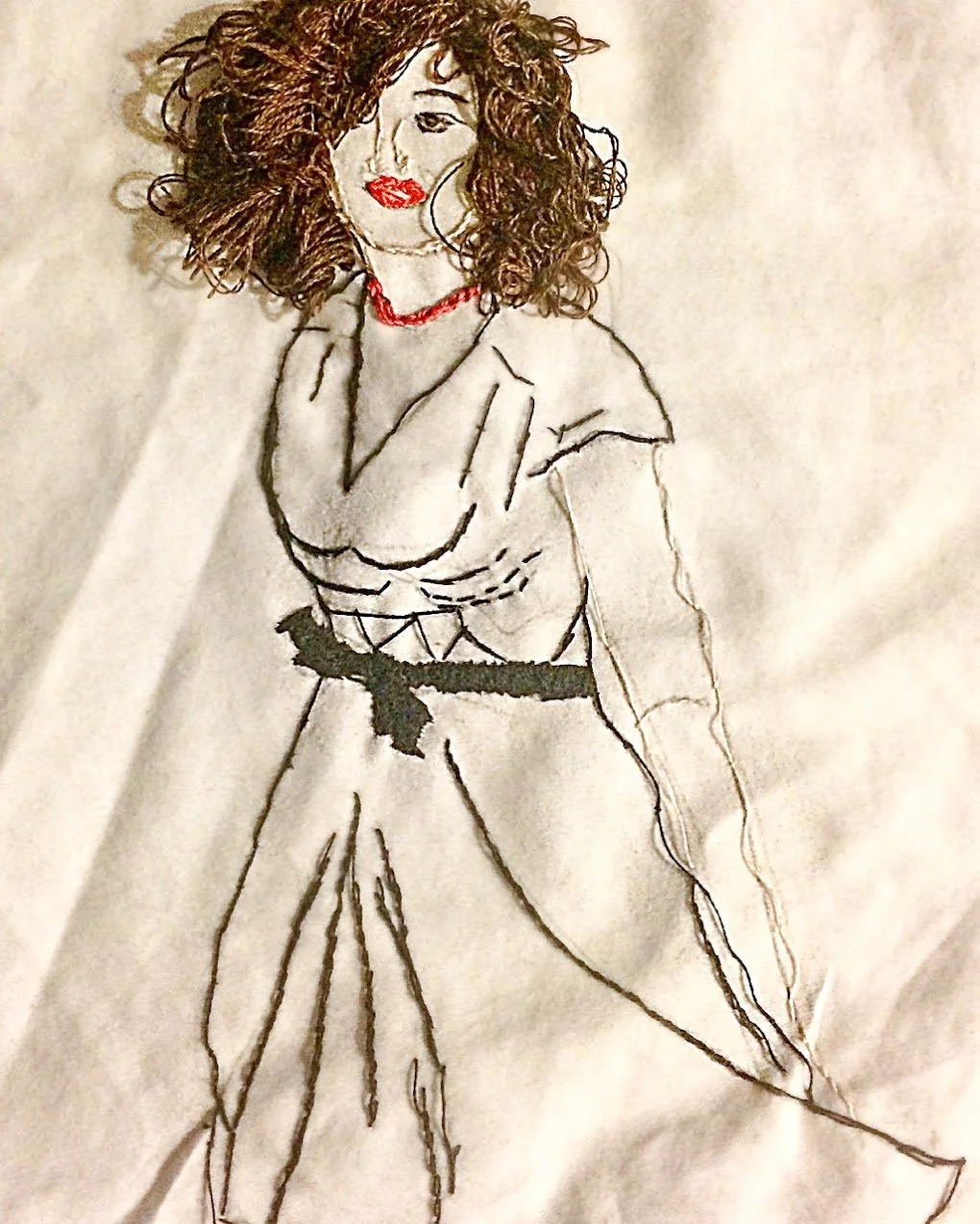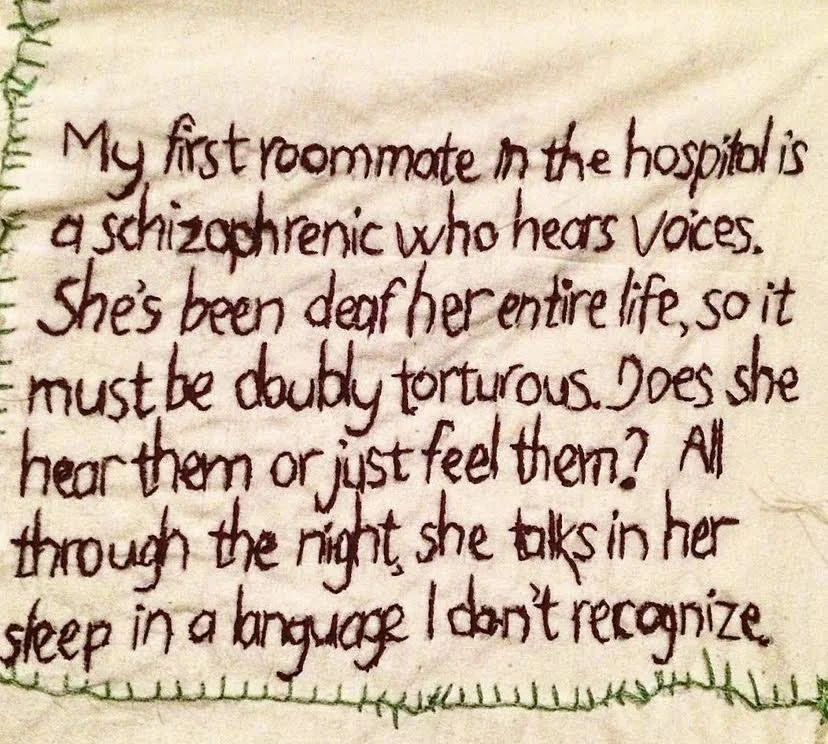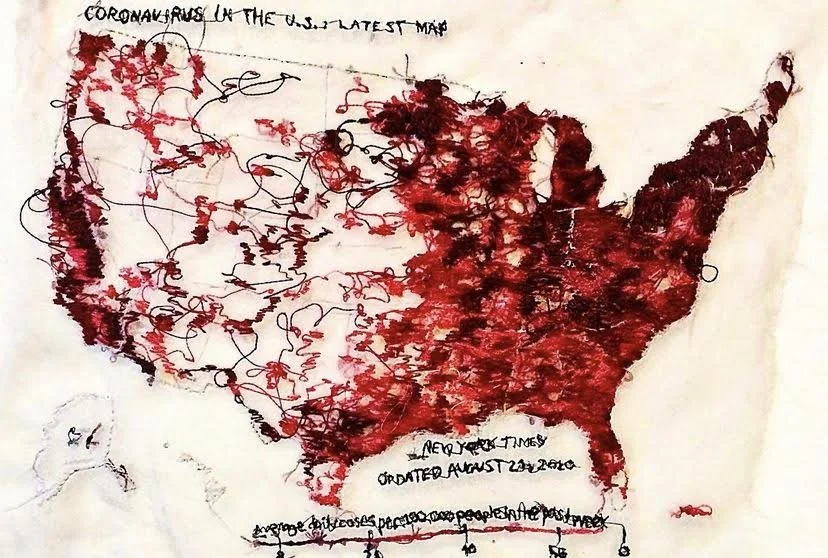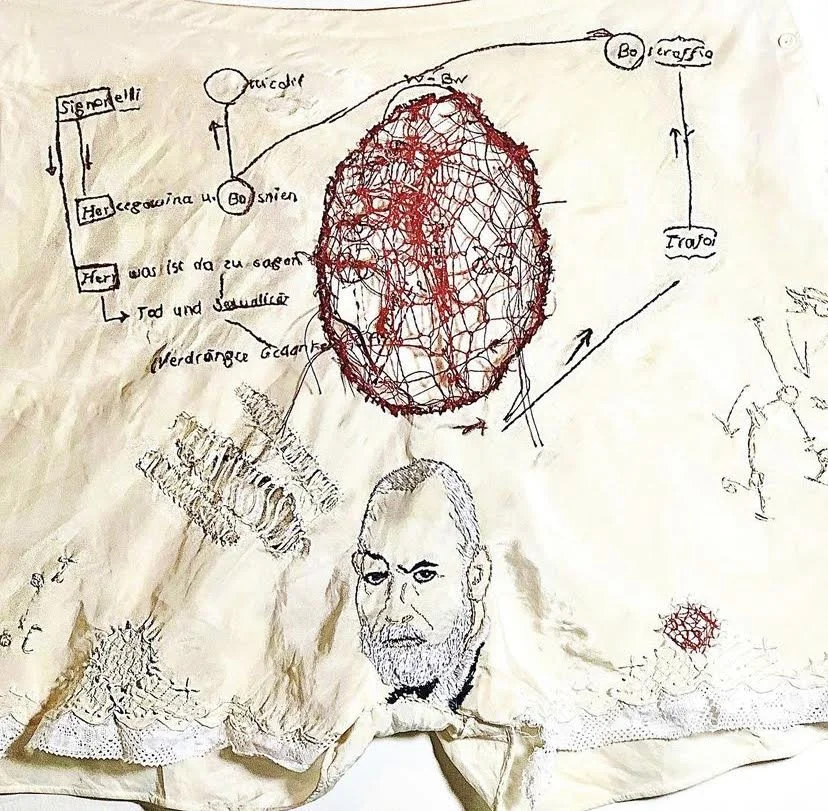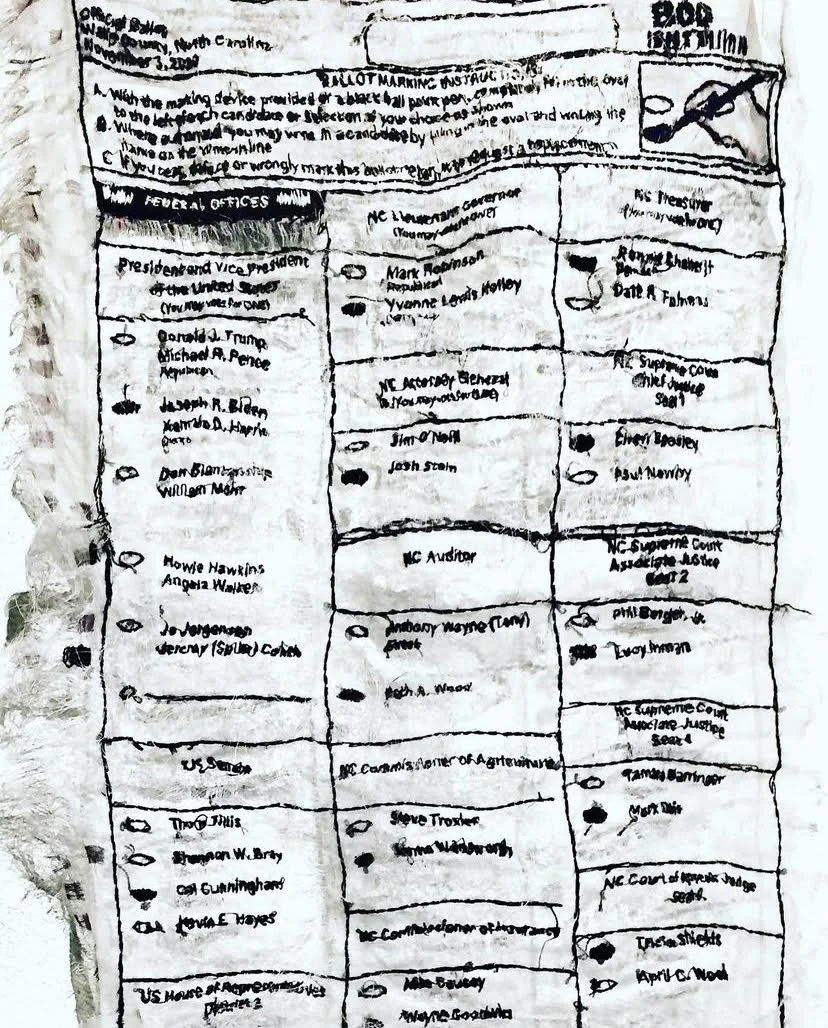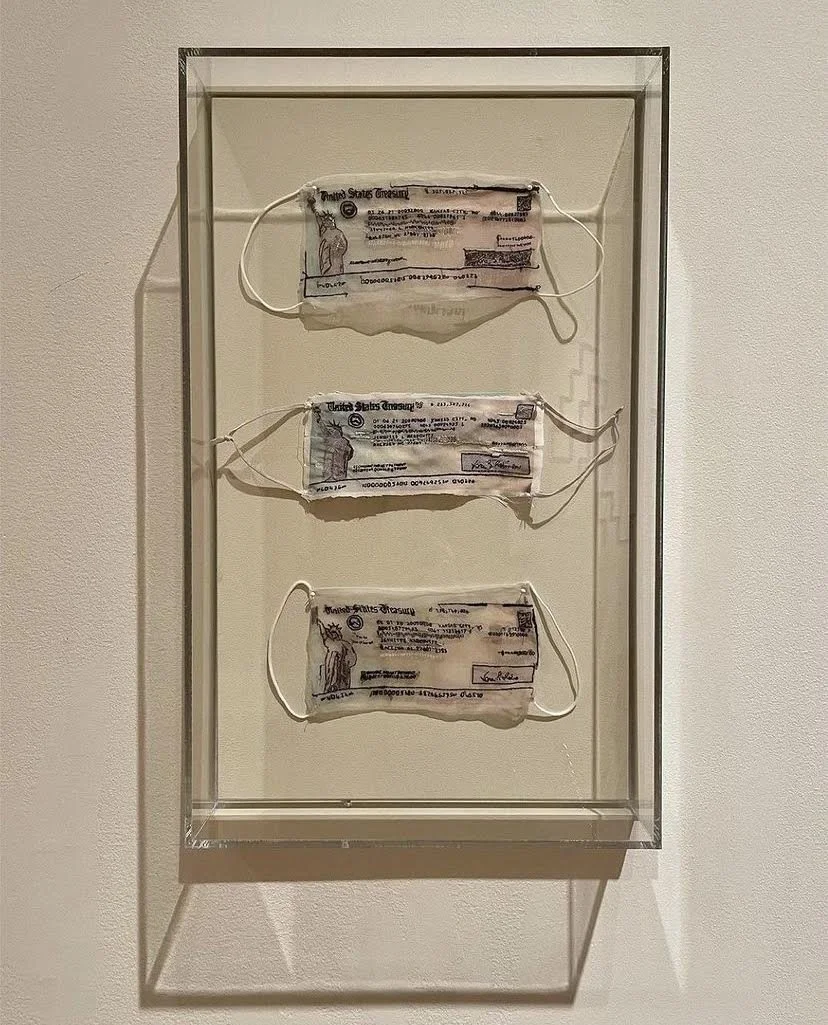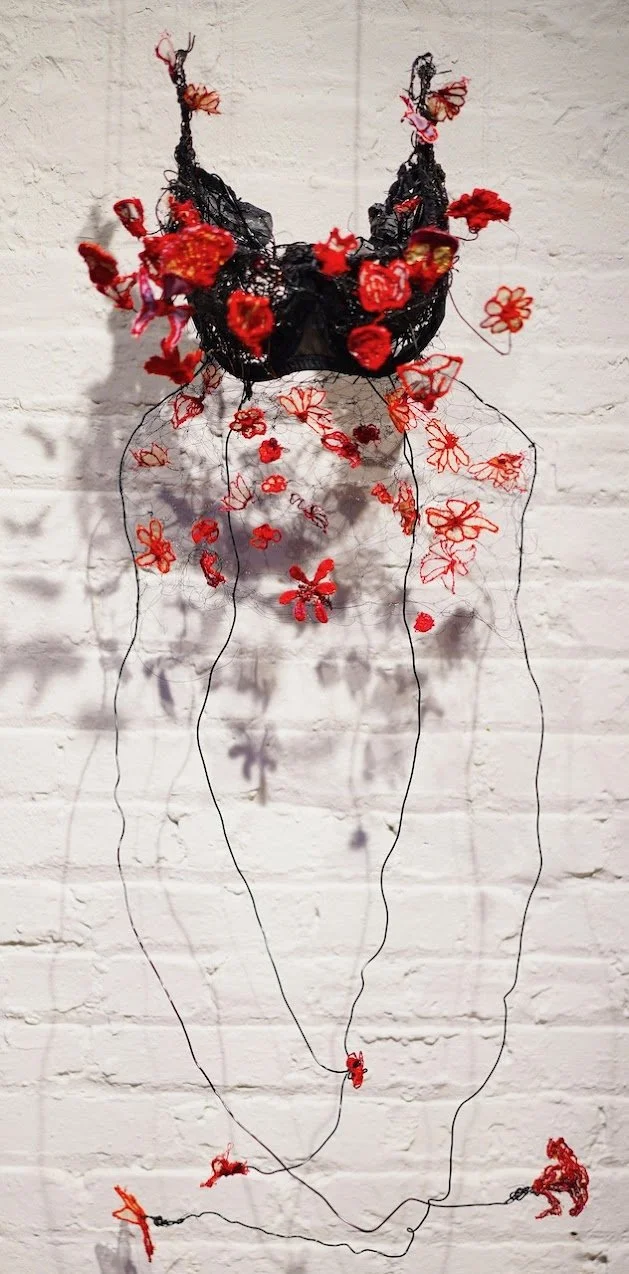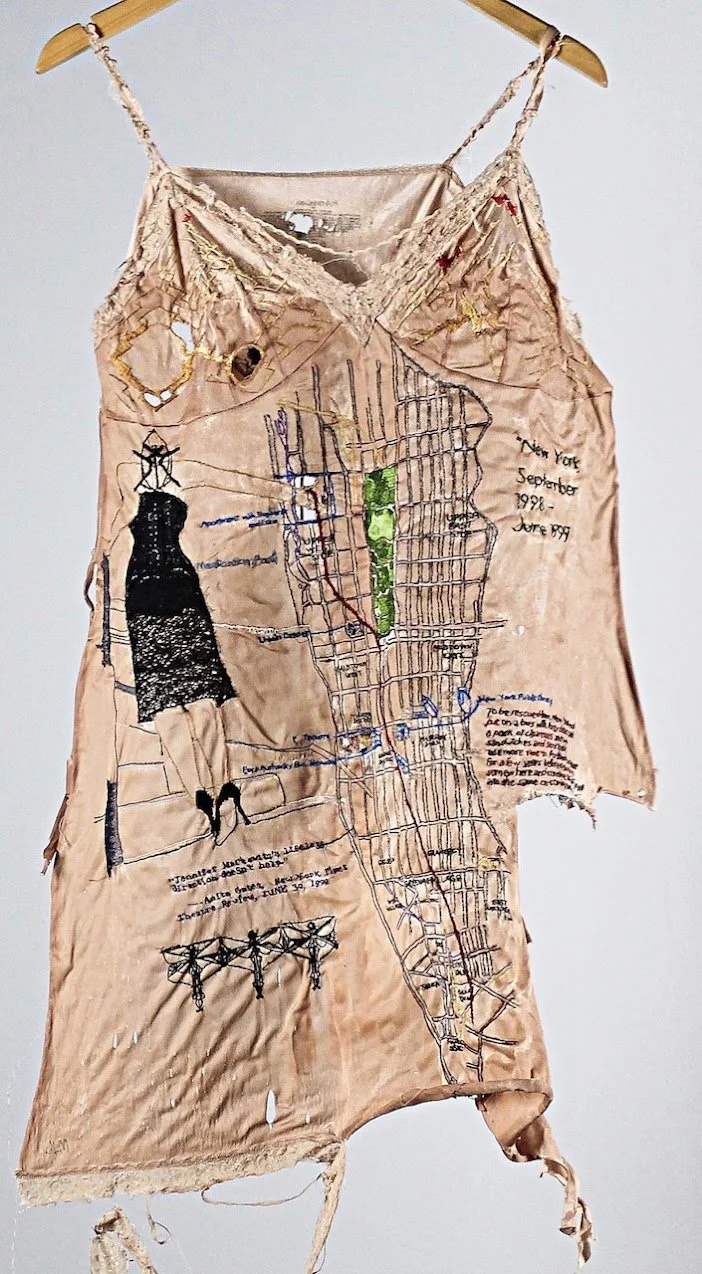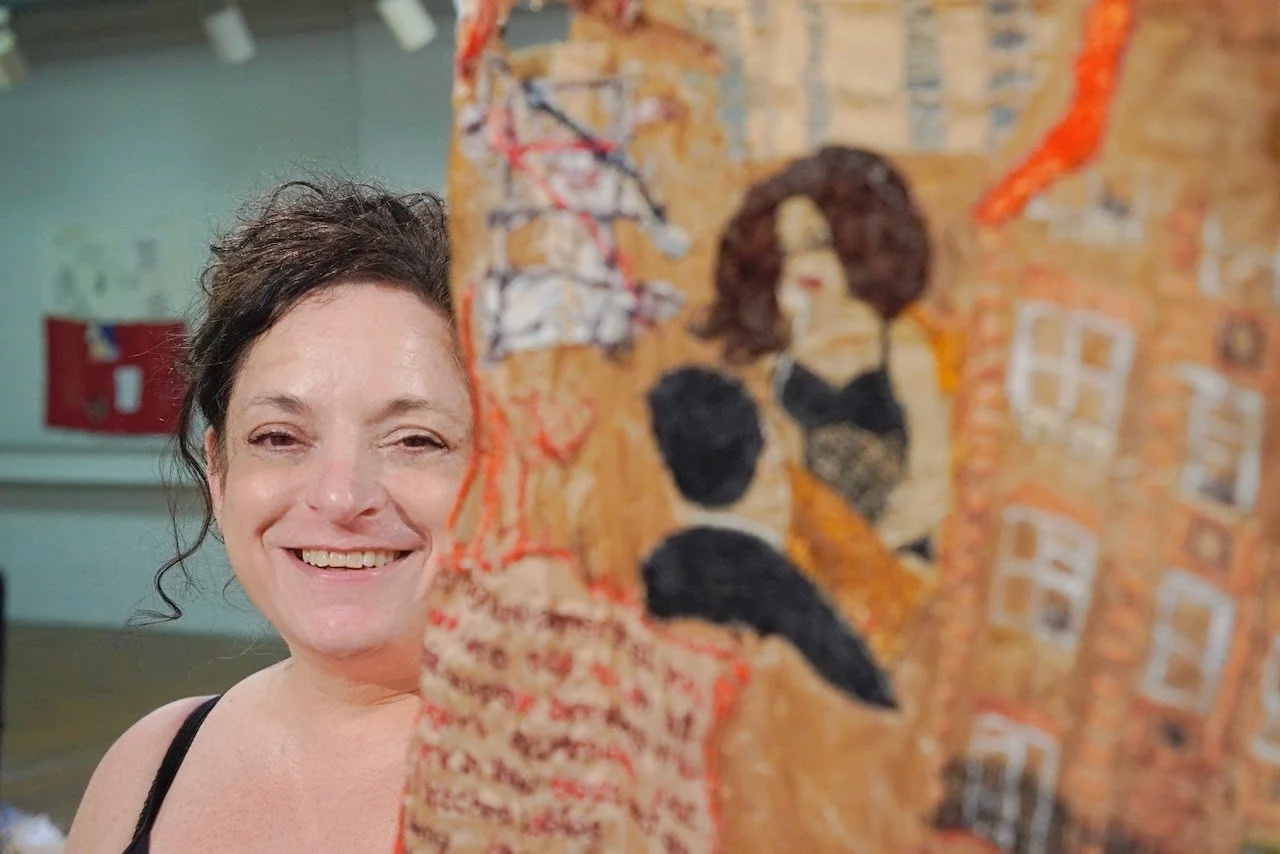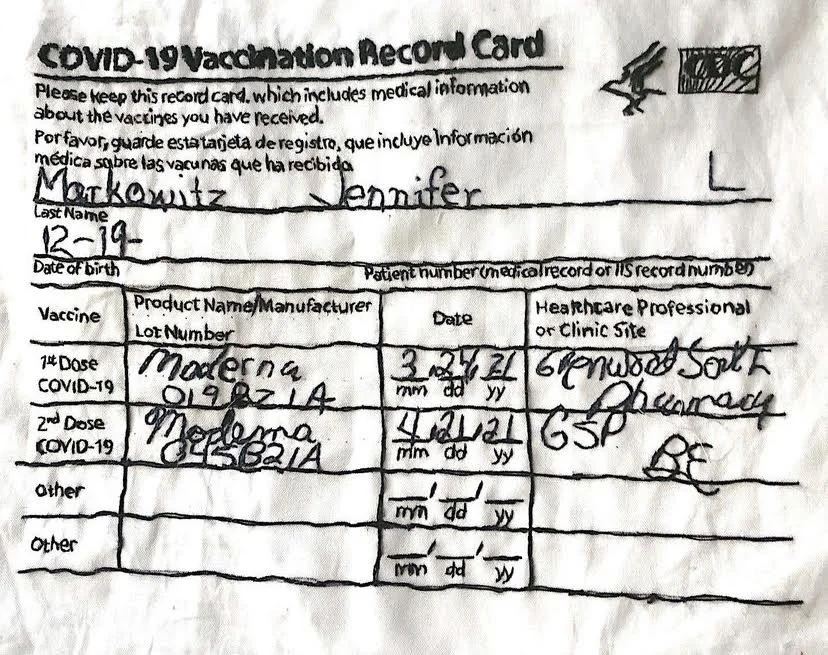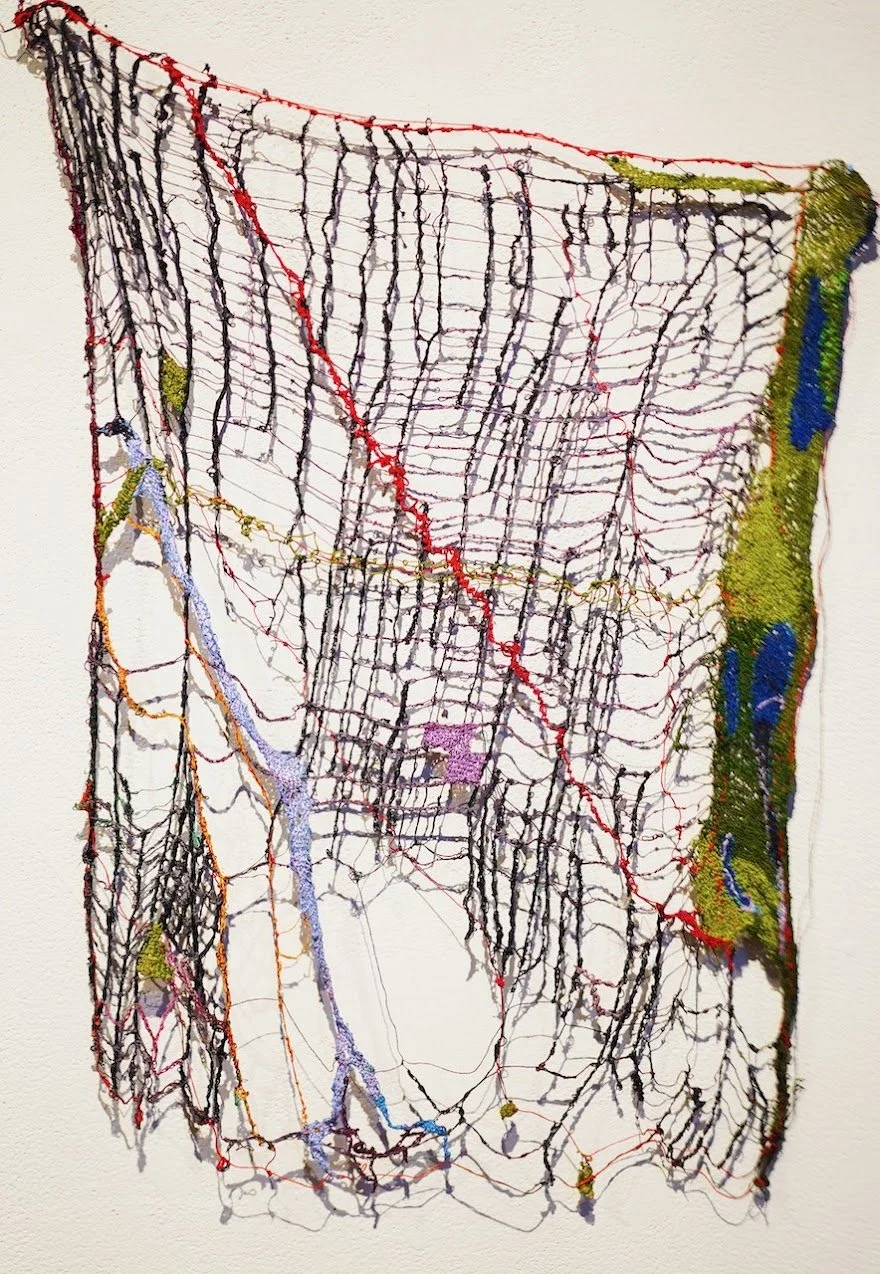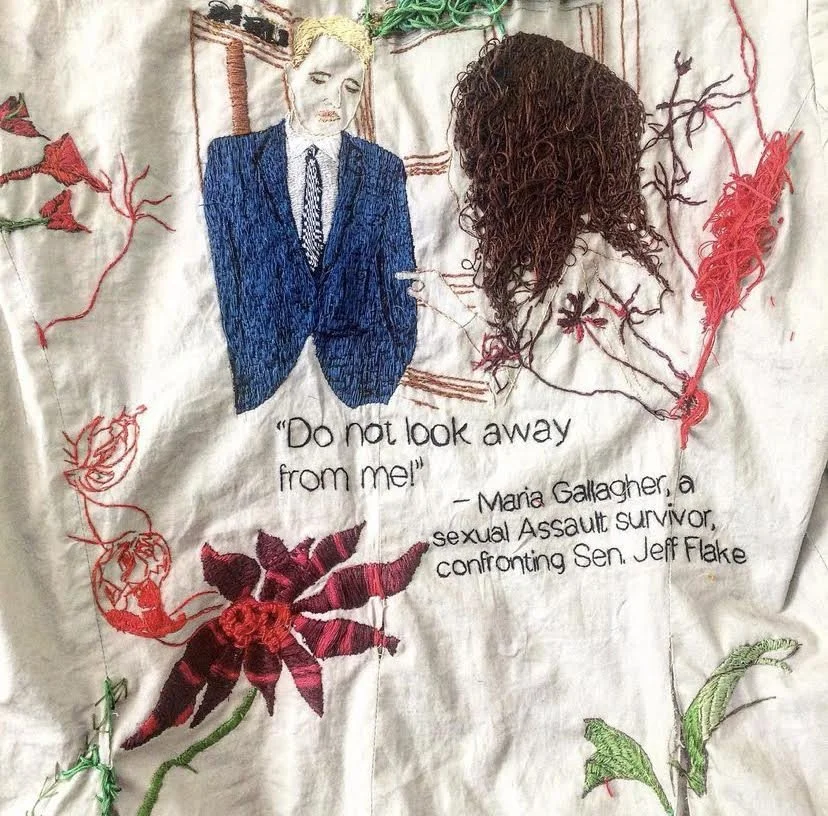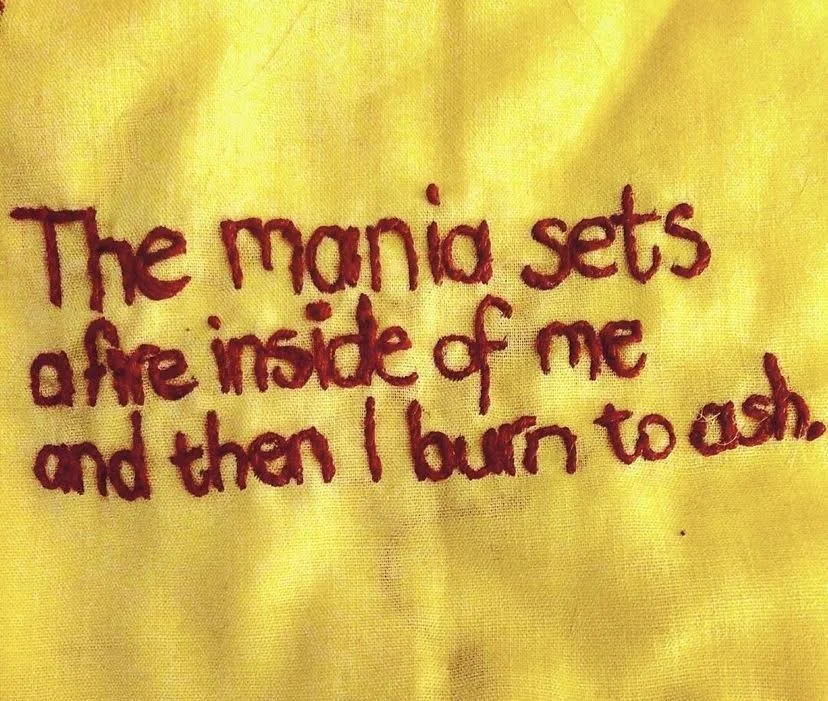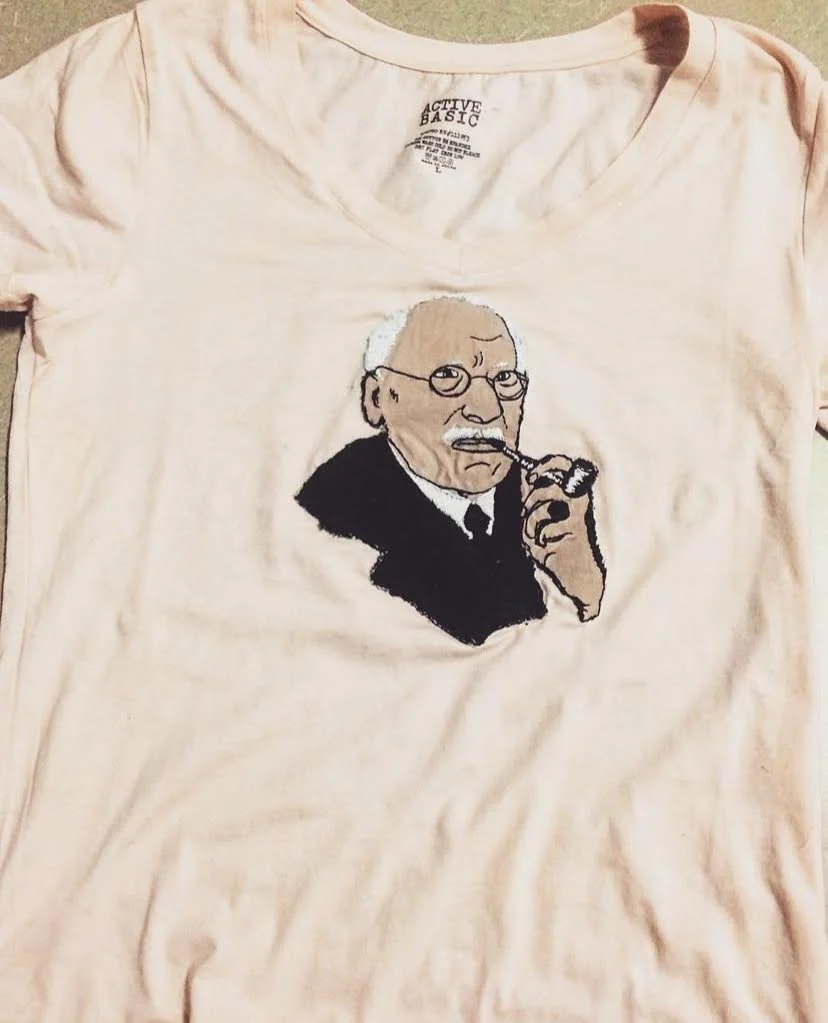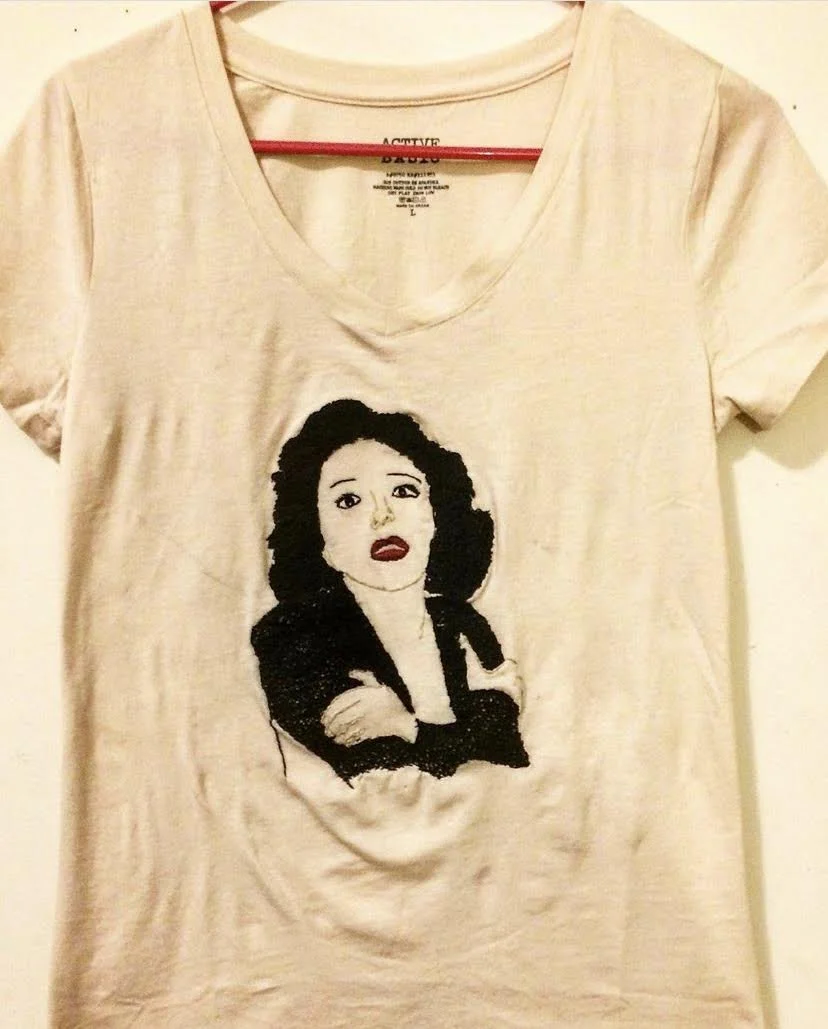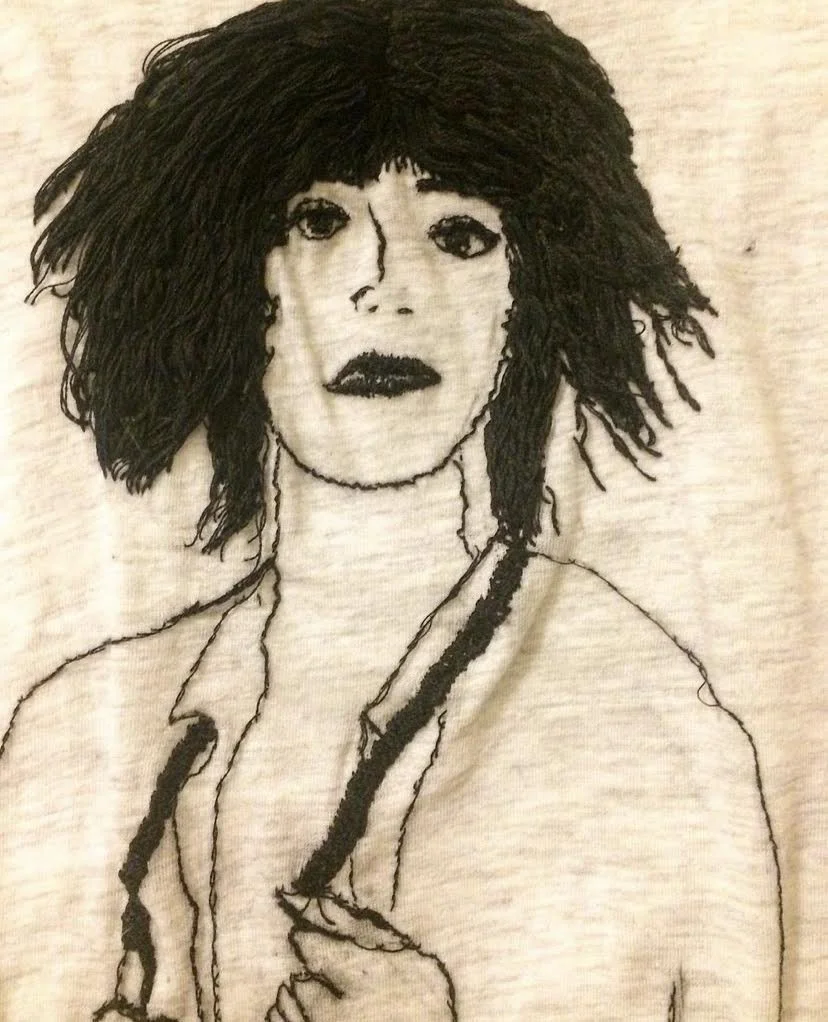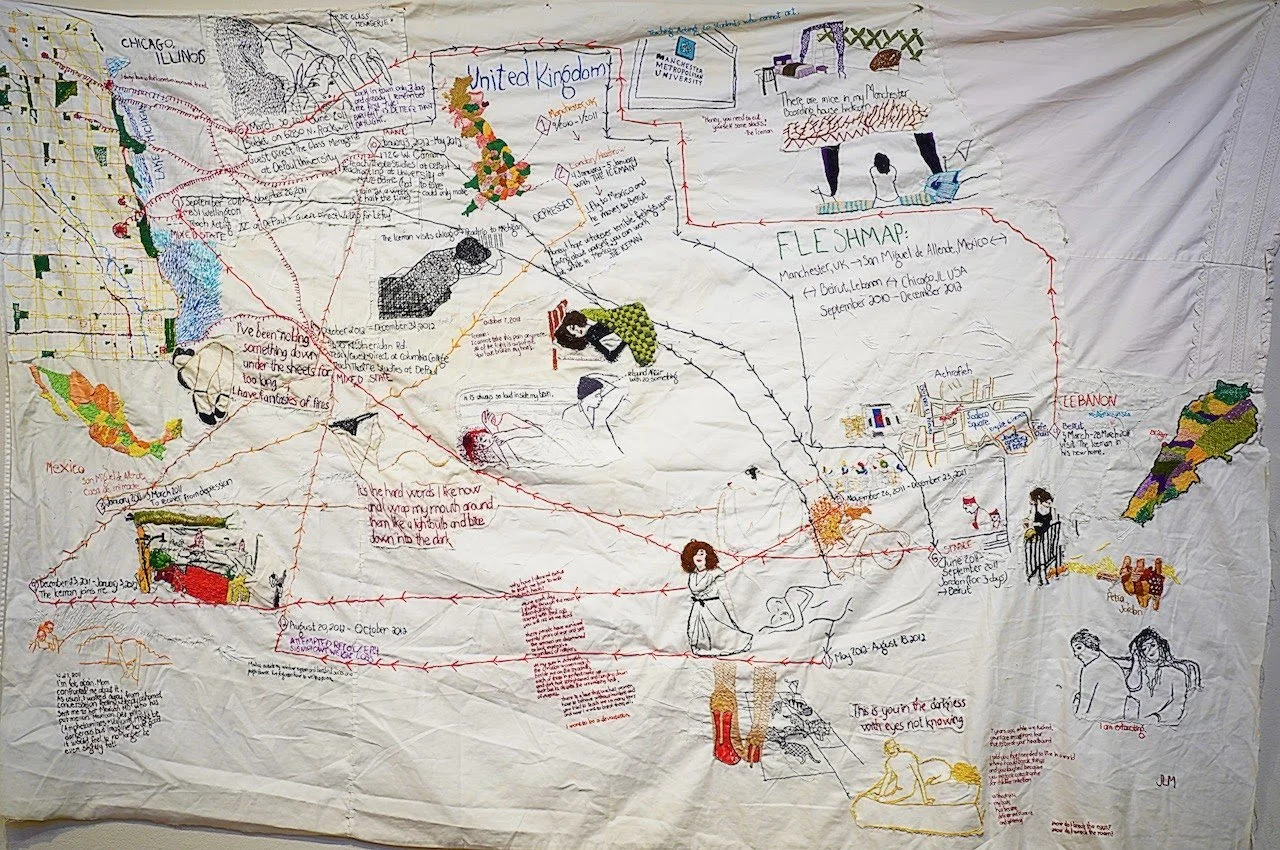Jennifer Markowitz
Self-portrait
This world is held by a thread, by Jeniffer Markowitz’s thread that is:
How does living with bipolar disorder affect your creative process?
The work I’m doing at the moment is less personal than the Fleshmap series I recently completed in that it explores themes of absence and presence and shared experience. However, even this type of work is an attempt to reveal something for which there are no words. That surrender to letting parts of the work reveal itself, rather than trying to fight them, derives from the push and pull of BPD. I will add, however, that this issue is not how I would define my work or me. It’s a part of me but it’s not who I am, and any talent I might have is not because of BPD, but despite it.
Embroidery is a craft that decorates fabrics. You’ve elevated this craft to art. Is the process of making something beautiful a form of healing?
Thank you! It’s an interesting question because I don’t really have an interest in beauty or healing in my work. I’m more interested in scars and damage and how that changes the topography of a person. My single intention is always to be as unflinchingly honest as possible. That said, yes, embroidery is a beautiful craft even when it’s disrupted. In terms of “healing”, I don’t make things to heal myself. Making art isn’t therapy to me because I have therapy for that. And yet, the act of stitching is often the only thing that makes me feel still inside and so, my long-winded answer to you is no . . . and sometimes yes.
Left to right: My Ballot, My America 2, 2020; Stimulus Mask I, II, III, 2021. Currently on display at Nasher museum, Reckoning and Resilience: North Carolina Art.
Photos by Jeff Markowitz
Your creations often depict grids: city maps, ballot forms, Covid vaccination forms, even textiles themselves are threads woven in a grid. Is there something about these matrices that resonates with you?
I have a terrible sense of direction. Also, I don’t drive. I spend half of my life disoriented, so it’s ironic that mapping has become so much a part of what I do. I’ve lived in 6 different countries and mapping those locations and events is what eventually led to Fleshmap. I’m very interested in psychogeography – the psychological connection to place – and so much of what I do relates to envisioning places, events and even objects as maps.
Fictional character you’d have dinner with?
If you’d asked me this 10 years ago, I would have said Frankie Machine from Nelson Algren’s Man with a Golden Arm. I’ve evolved since then and recognize that evening would’ve ended with disappointment. So, I will say Eloise at the Plaza (by Kay Thompson) because I want to draw on the walls of her hotel room with her.
Do you miss New York?
I really do! But it’s impossible for me to ever afford to live there again so I just fantasize about visiting soon.
Life is______.
Life is something I cannot assess until I know how it ends.
How can we buy your art?
Everything is up on my website at www.fleshmap.me.
For sales out of my studio: https://fleshmap.me/for-sale-in-studio
For in person embroidery lessons in my Raleigh studio: https://fleshmap.me/classes
You can also follow me on Instagram @fleshmap. Please feel free to PM me if there’s something you see that you like but is not for sale in my shop. I will likely make a smaller version upon request!
Finally, you can visit me in my studio during the day (Wed-Sun) at Artspace, 201 E Davie St, Raleigh, 27601.
UK/Mexico/Lebanon/Chicago: September 2010- December 2012, Fleshmap: My Unraveling Geographies.

